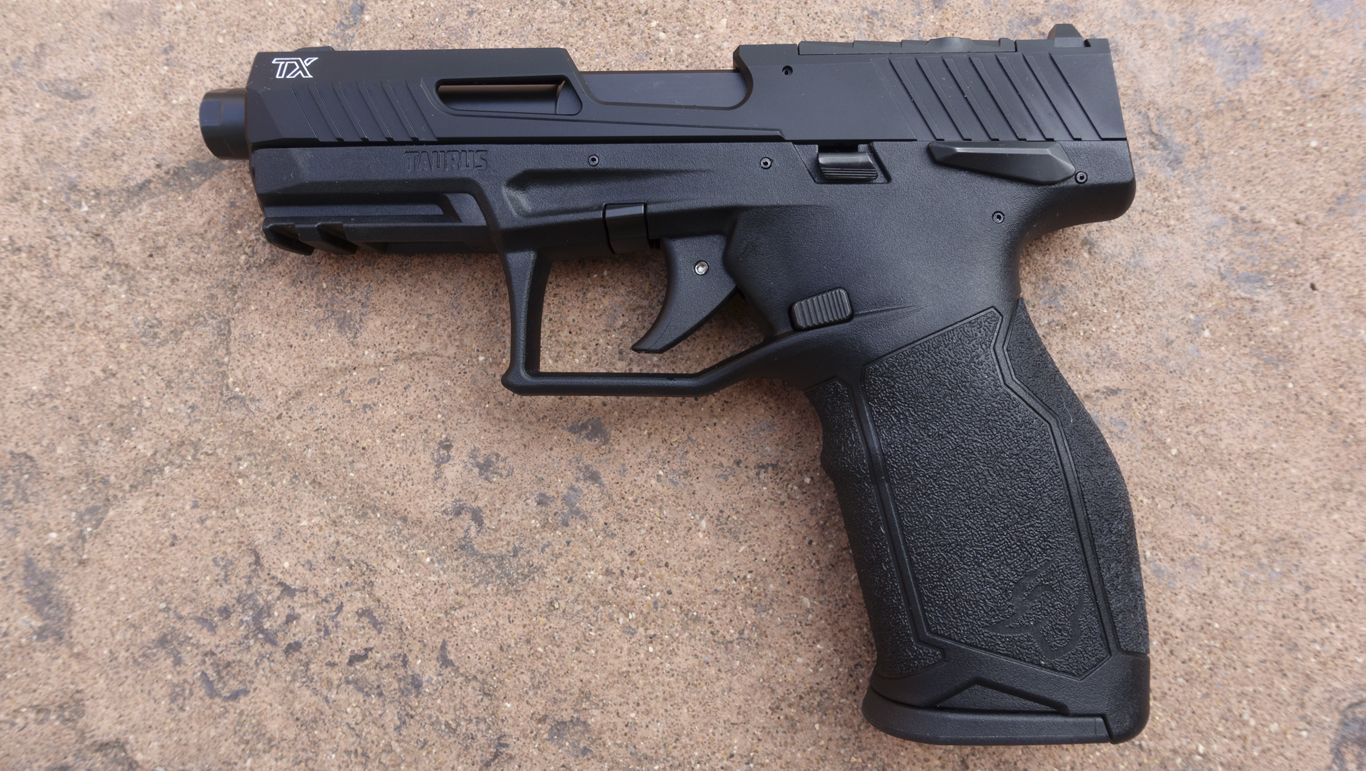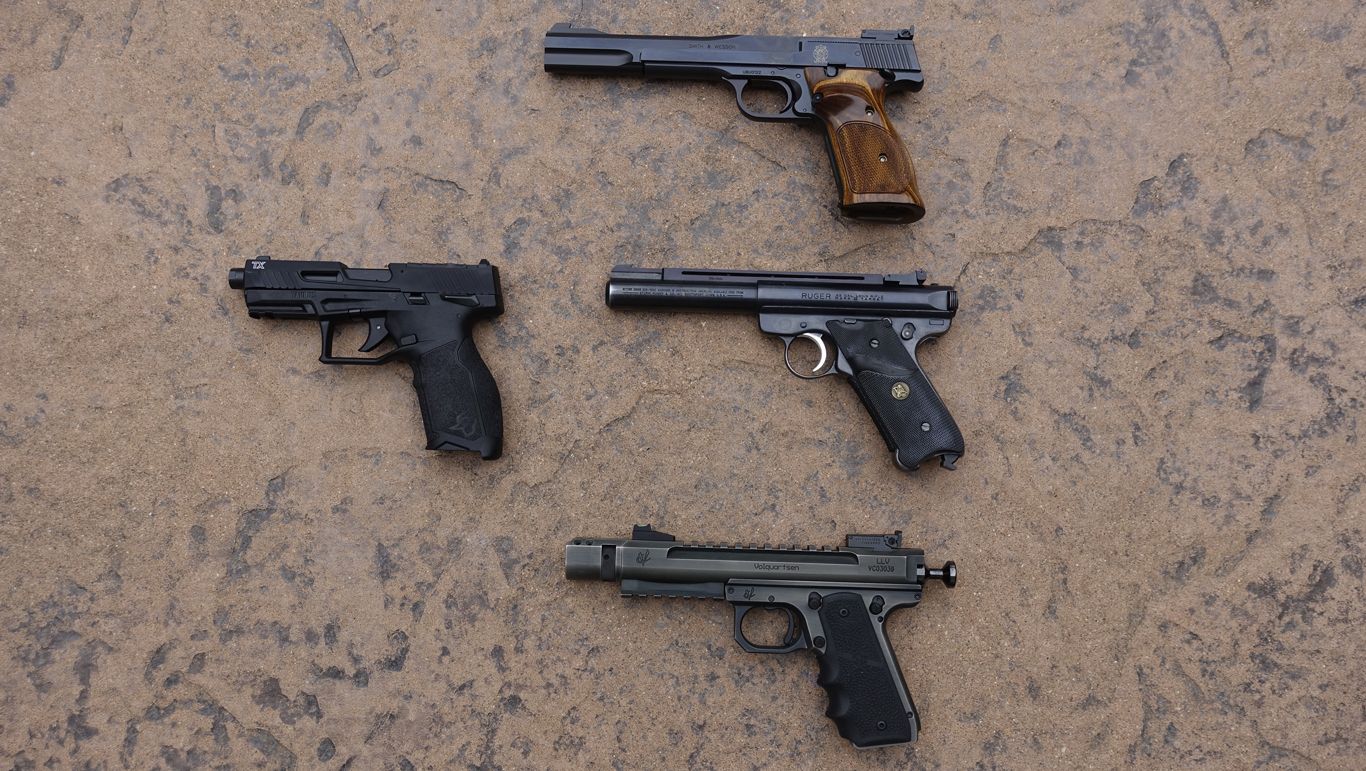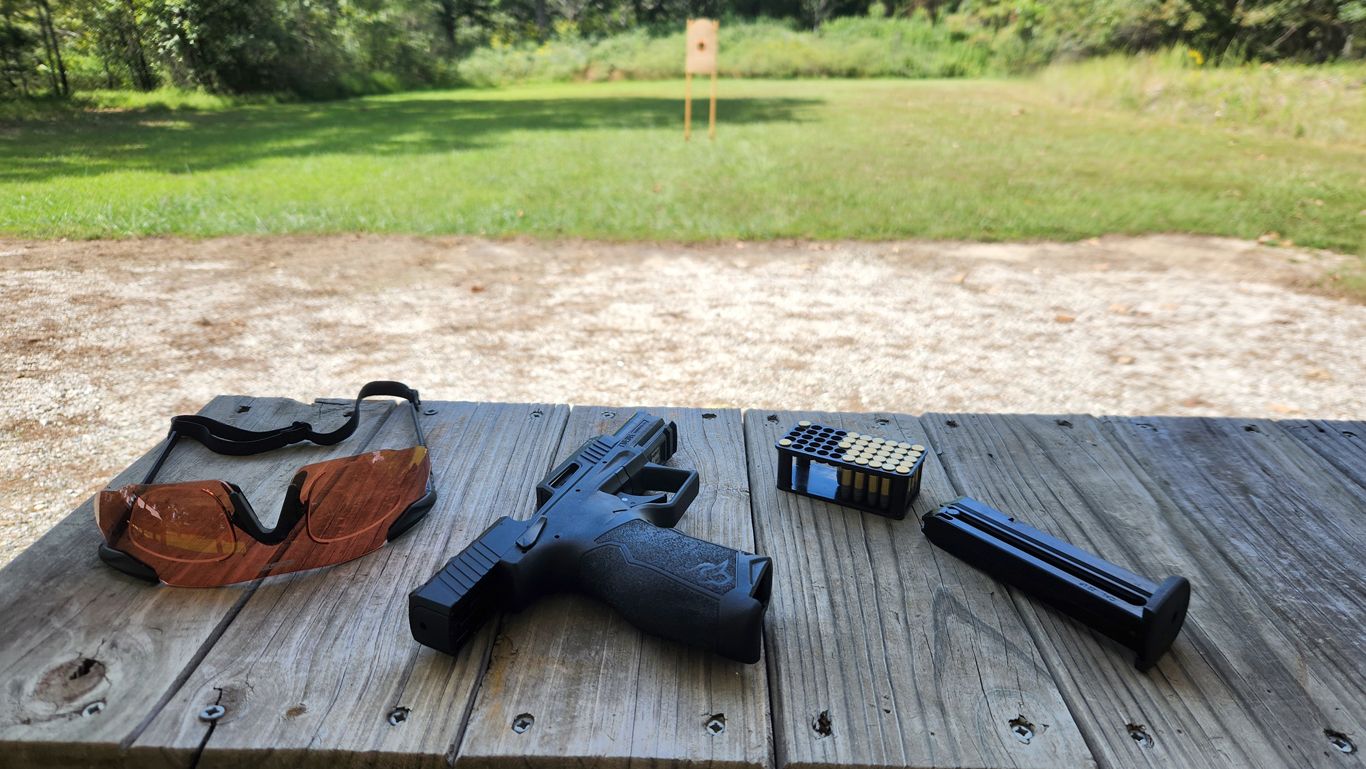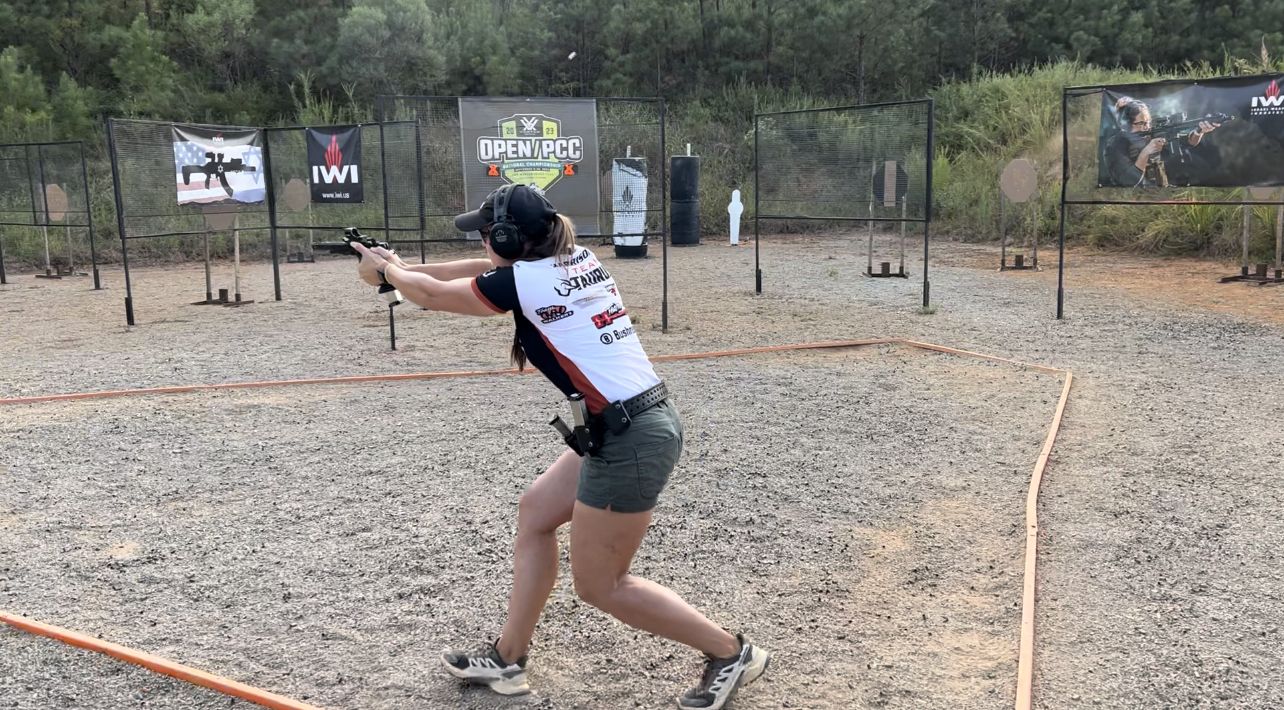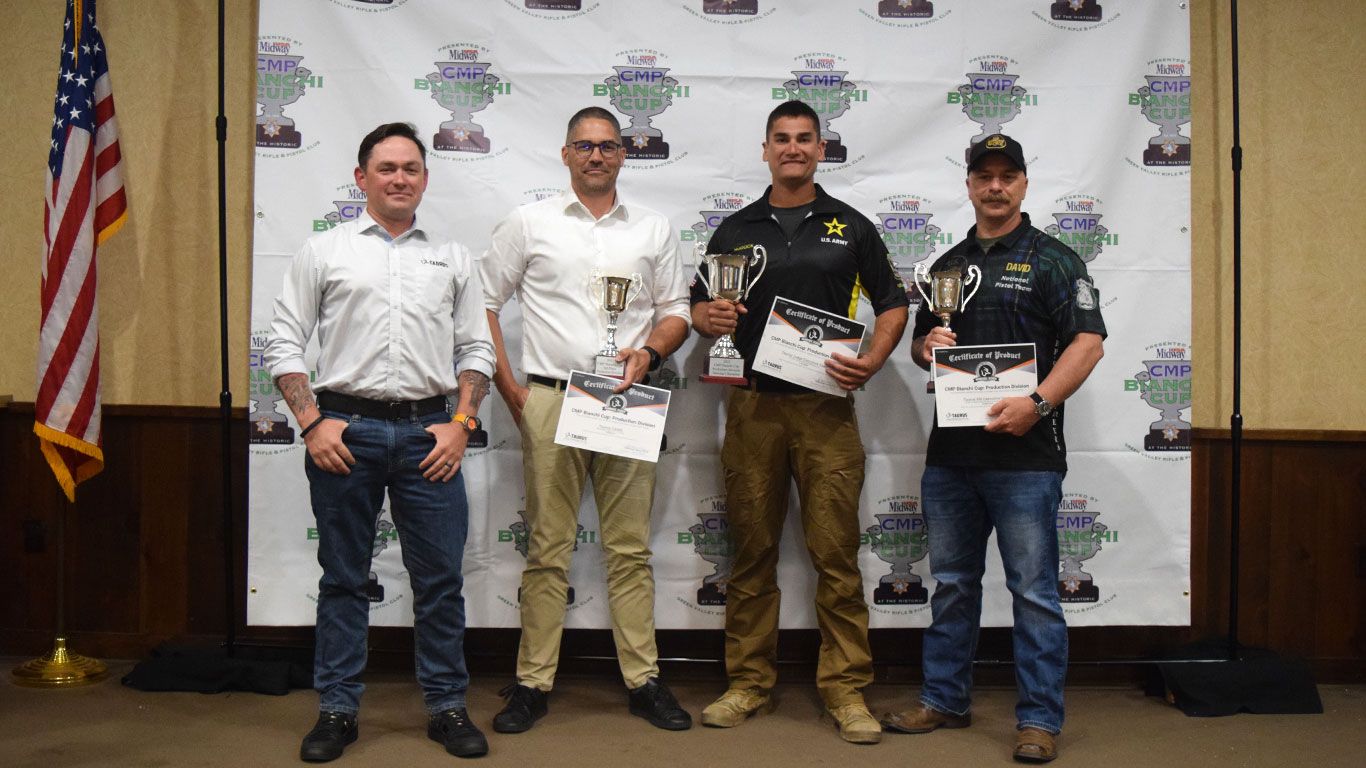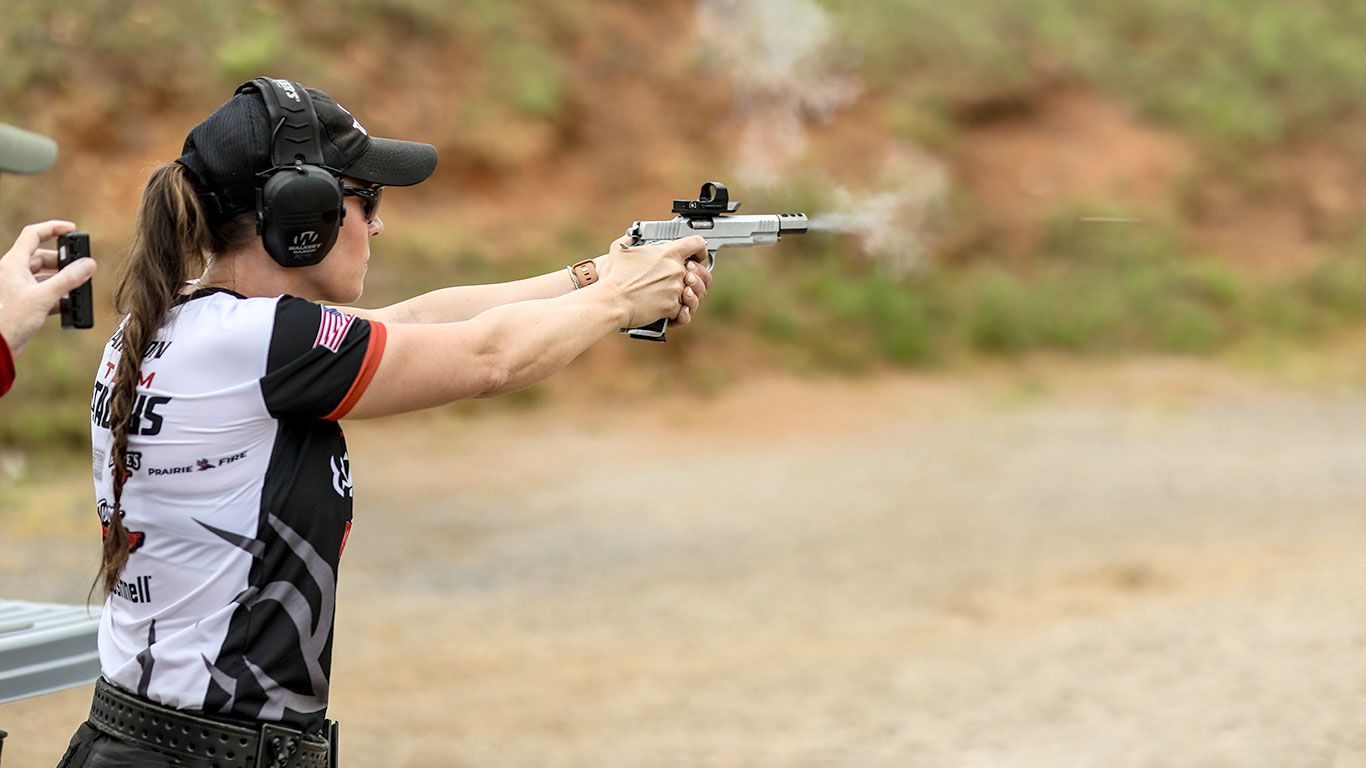By Jason Baird
According to Taurus’ website, “The Taurus TX™ 22 is most advanced 22LR rimfire pistol on the market. Engineered to deliver best-in-class accuracy and reliability, this rimfire polymer sporting pistol shoots and feels every bit like a custom-tuned competition model-without any costly upgrades or modifications.” This is quite a tall order for a mass-produced gun that sells for $363.99 (MSRP) for the version I evaluated. Does it live up to its manufacturer’s claims?
If you take a look at the website, you’ll see there are several versions of the TX 22. For my assessment, I worked with the Black 22 rounds T.O.R.O. (Taurus Optic Ready Option). It has what Taurus calls its Performance Trigger System (PTS), of special interest to me because trigger feel is one of the first things I notice when working with a gun. I also immediately noticed the slide has several areas where the material is completely cut-out to make it lighter, the slide has forward and rear cuts for better gripping while slide racking and press-checking and that the barrel is threaded for muzzle device (suppressors or compensators) attachment.
For those who might want to use a light or laser on the gun, it comes with a “Picatinny” (MIL-STD-1913) rail integral to the forward underside of the frame. In these days of attaching a lightweight red dot sight to almost every hand gun, the T.O.R.O. uses the common Shield Reflex Mini Sight Compact (RMSC) slide cut-out footprint for optical sight mounting.
I spent some of my formative years as a member of the U.S. Air Force Academy intercollegiate pistol team firing .22 target pistols, and later while an exchange officer with the Royal Air Force (RAF) I was the Officer-In-Charge (and pistol coach) of the RAF Cranwell shooting team. We traveled the UK and Europe shooting and competing against other teams. I’m certainly not the best pistol shot, but I’ve shot a wide range of handguns – probably far more types than most shooters.
For my review, I decided to create a rational comparison of the TX 22 with some other “custom-tuned” competition handguns that illustrate the wide range of pistols of this type. As I mentioned previously, trigger feel is one of my qualification factors when it comes to competition handguns, and Taurus made a point of using its PTS in the TX 22, so I paid close attention to trigger function during my comparison. I note that the Taurus pistol is striker-fired, while the other pistols I fired for this evaluation were hammer guns, which should have given them an advantage in trigger feel and operation. So, I took that into account.
I evaluated each of the guns using the open sights that came installed on them, so the sight configuration and quality of each also came into consideration. Only one of the three other pistols I shot for this comparison was capable of mounting a suppressor and an optic, so I stayed with unsuppressed and open-sighted for my firing tests. This is not to minimize the extra flexibility those capabilities give to a handgun for a wide range of uses; I just wanted an apples-to-apples comparison of what I consider to be the primary features needed for a competition pistol. The Black 22 rounds T.O.R.O. has fixed sights; the rear sight must be drifted for windage adjustments and there are no elevation adjustments. For my testing, this wasn’t an issue as I was interested in shooting groups rather than specific shot placement. Other versions of the TX 22 are offered with adjustable sights. The Taurus pistol’s rear sight has a U-shaped notch; the other pistols have squared notches. Each of the four handguns has external, manual safeties in addition to others.
To the Range
For my shooting evaluation I used high quality .22 target ammunition to minimize any ammo-related variables. There were no malfunctions of any sort during my testing.
The other pistols I shot for this comparison were an S&W Model 41 (similar to the one I used while on the Academy pistol team), a Ruger Mark II target model that had a black, full-length ventilated rib attached to the top of the barrel and a Volquartsen Scorpion target pistol with its detachable compensator.
Results
I fired the pistols NRA Bullseye-style (one-handed) at bullseye targets 50-feet downrange from my bench. I shot acceptable groups with each of the three pistols, and couldn’t tell any accuracy differences among them at my level of practice or skill. Had I spent several weeks shooting them against each other, I would definitely have been to shoot one better than the others, but that level of evaluation was not necessary as its results would have depended as much on my techniques and preferences as on the quality of the pistols. I didn’t shoot them from a rest, because that would have negated pistol characteristics important for an individual shooter’s use of a pistol in Bullseye competition.
The TX 22 includes a grip frame well configured for target shooting, with a palm swell and reduced diameter just below where the trigger guard intersects the grip. The pistol is much lighter than each of the three other handguns in my comparison group, which could be advantageous for a beginning shooter or one with less upper body strength. Target pistols tend to be purposely heavy to help dampen muzzle rise (the S&W and Ruger pistols are exemplars of this concept), or not quite so heavy but with a compensator to fight muzzle rise (i.e., the Scorpion). In fact, some of the TX 22 models come with screw-on muzzle compensators, and those can be purchased separately and attached to the Black 22 rounds T.O.R.O. version. Just be sure whatever muzzle device you may use is tightened snugly and stays tight on the barrel threads if you want the pistol to have consistent accuracy.
To the trigger. In striker-fired guns, to initiate the ammo primer the trigger must transfer its leverage through a transfer bar to the mechanism that actuates the striker. Movement and drag of parts and springs leads to the typical trigger actuation feel of striker-fired handguns: creepy + gritty + spring stacking, then “bang” at unpredictable points in the process. A shorter transfer bar, polished bearing surfaces, thorough cleaning and lubrication are some ways to improve on this. In contrast, with hammer-fired handguns, trigger movement simply turns a sear or sears that release a spring-loaded hammer to strike the firing pin.
So, how well did Taurus do with its PTS? The TX 22 has a decent trigger. I noted a longer take-up stage for the first part of trigger travel, but once I thoroughly cleaned the trigger mechanism and dry-fired (with “snap caps”) the gun multiple times, there was no creep or gritty feel remaining. I detected some spring stacking, which is probably unavoidable for a striker-fired system, but the trigger “broke” consistently and predictably, with a little over-travel.
Overall, I recommend the TX 22 Black 22 rounds T.O.R.O. to someone starting-out in competitive shooting who wants good value in a pistol, and who may also want to use it for plinking and pest control.
About the Author
Jason Baird is a retired Air Force B-52 navigator and “rocket scientist” and also, a retired professor of mining and explosives engineering. He owns and operates Loki Incorporated, a successful small business participating in a wide range of energetic materials and ballistic resistance topics and performing test and expert witness services. As a hobby, he enjoys building useful stuff out of wood and steel. He also runs a brush hog on his own property, and enjoys using a wide variety of power tools. Oh, and he’s known as “Dr. Bomb,” or “the Bomb,” to friends.
